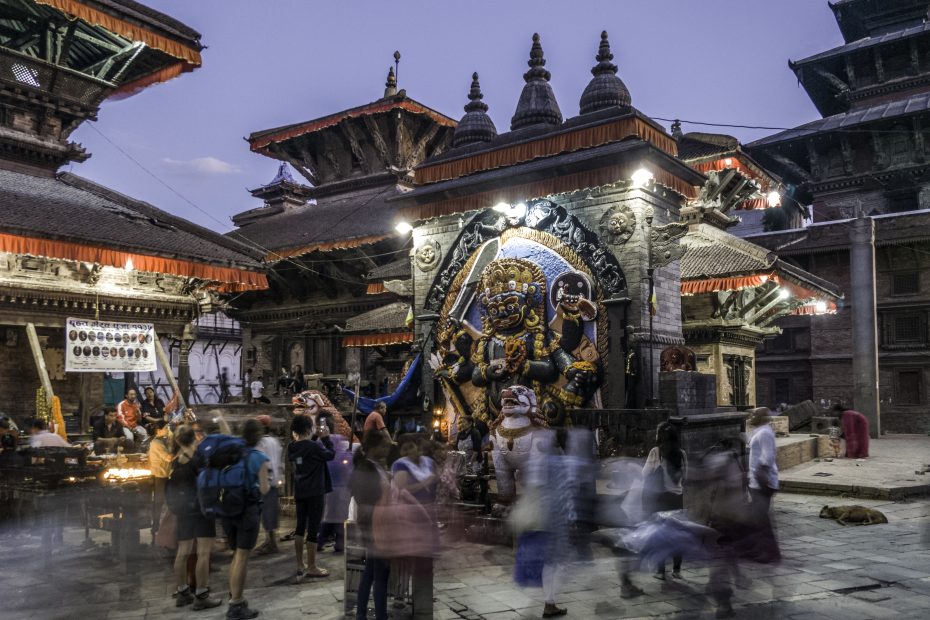Table of Contents
Introduction
Nepal, home of the tallest mountains in the world, is also a deeply spiritual place. Dotted with temples and monasteries, the country provides many opportunities to connect with ancient traditions and discover inner peace. Whether one is Hindu, Buddhist, or simply curious, visiting Nepal’s incredible temples offers a glimpse into the rich culture and storied past of this Himalayan nation.
History and Significance of Temples in Nepal
Both Hinduism and Buddhism have long histories in Nepal that date back thousands of years. Temples have been an integral part of Nepali society and culture since ancient times. For Nepalis, temples are places to pray, make offerings, celebrate festivals, and unite with the community. They also serve as important centers of learning and pilgrimage sites for the devout.
The architectural beauty and spiritual essence of Nepal’s temples are unmatched. Each temple has its own legend, deity, and unique rituals that connect the temple-goers to the divine. Safeguarding these sacred sites provides a profound sense of purpose and meaning.
Famous Temples to Visit
For visitors seeking to experience Nepal’s sacred sites, there are a few must-see temples:
Pashupatinath Temple
The most significant Hindu temple in Nepal, Pashupatinath is dedicated to Lord Shiva and located on the banks of the Bagmati River in Kathmandu. The temple complex has existed for at least 1,500 years and sees thousands of devotees each day. It is also an important cremation site.
Boudhanath Stupa
One of the largest Buddhist stupas in the world, Boudhanath is located in Kathmandu. With its bright white dome and gilded spire, it is absolutely captivating. Visitors can circumambulate the massive mandala-shaped stupa, spinning prayer wheels and taking in the serene atmosphere.
Swayambhunath Temple
Resting atop a hill west of Kathmandu Valley, Swayambhunath is sometimes called the “Monkey Temple” for its holy resident monkeys. The gleaming white dome and all-seeing Buddha eyes gazing out in the four directions make this an unforgettable place.
Changunarayan Temple
Older than Kathmandu itself, Changunarayan Temple is a Hindu gem located at the gateway to the Valley. Its elaborately carved wooden altars showcase incredible Newari artistry dating back to the 4th century.
Muktinath Temple
Perched high up in the mountains of Mustang region, Muktinath draws pilgrims for its natural springs and 108 stone spouts in the shape of cow heads. The peaceful Jwala Mai Temple nearby offers a continually burning natural gas fire.
Unique Architecture and Design Elements
Nepali temples showcase intricate craftsmanship and architectural genius. Pagoda-style roofs with stacked eaves curve elegantly skyward. Delicate wood carvings depicting deities, dancers, and musicians adorn shrines, columns, and windows. Vibrant colors and decorative banners add to the sensory experience. The overall effect is both ornate and mystical.
Spiritual Practices and Rituals
Temples come alive each day with various spiritual rituals and practices. Puja ceremonies involve making offerings of flowers, rice, incense, light, and water at shrine altars. Prayer wheels spun clockwise release mantras into the universe. The sounds of chanting, bells, and gongs resonate powerfully. Mindful prostrations and meditation bring quiet contemplation. For the flexible, yoga positions enhance the energy flow.
Festival Celebrations
The Nepali festival calendar provides many chances to see temple rituals and processions. Durga Puja, Indra Jatra, Dashain, and Buddha Jayanti are all marked with pilgrimages to sacred sites, sacred baths, mask dances, and public feasting. The festive costumes, food, and atmosphere create lasting memories.
Finding Inner Peace and Tranquility
Beyond the elaborate ceremonies, intimate moments of stillness and solemnity permeate Nepal’s temples. Visitors can often speak with monks, receive blessings or teachings, and observe personal offerings being made. The soothing sounds of chanting along with the aroma of incense invoke a tranquil ambiance for spiritual reflection. Temple locations high on hills or deep in forests further cultivate this.
Travel Tips for Temple Visits
To properly visit Nepali temples, dress conservatively, remove shoes at entrances, and avoid leather items out of respect. Be prepared to make a small donation or offering. Photography may be restricted in certain areas. Participate respectfully in rituals and ceremonies when appropriate. Mindfully keep noise levels down. Teach children the proper etiquette. Seek out a monk or guide to explain the meaning behind the rituals. This will allow you to fully appreciate each sacred site.
The Importance of Preservation
Sadly, some of Nepal’s ancient temples have succumbed to earthquakes, floods, and neglect. But efforts are underway to carefully reconstruct damaged temples as well as safeguard those still intact through restoration and renovation projects. Tourism helps provide jobs and generates funds towards these goals so that future generations can continue enjoying Nepal’s priceless cultural heritage.
Conclusion
Nepal offers incredible opportunities for pilgrimage, peace, and spiritual awakening. The backdrop of the world’s highest peaks complements the archaic essence and lively rituals still practiced in the country’s ornate temples. Visitors wanting to connect with Nepal’s sacred heritage will find beauty, mystery, and perhaps even transformation amidst the incense, bells, and chanting.
FAQs
What is the best time of year to visit Nepal’s temples?
October to November, when the weather is clear and dry, is an ideal time. Major festivals like Dashain also take place at this time.
Which temples can I visit if I have limited time in Nepal?
Prioritize Pashupatinath, Boudhanath, and Swayambhunath in Kathmandu for an efficient temple experience.
What is the proper dress code and etiquette for temple visits?
Both men and women should cover their legs and shoulders. Remove hats and shoes before entering sacred areas. Be respectful by keeping noise down.
What is a puja ceremony?
A puja is a worship ritual done at a temple shrine, involving offerings like flowers and rice along with chanting, bells, and mantras.
What is the historic significance of Changunarayan Temple?
Changunarayan is the oldest temple in the Kathmandu Valley, built in the 4th century. Its rare wooden carvings offer insight into early Nepali art.
